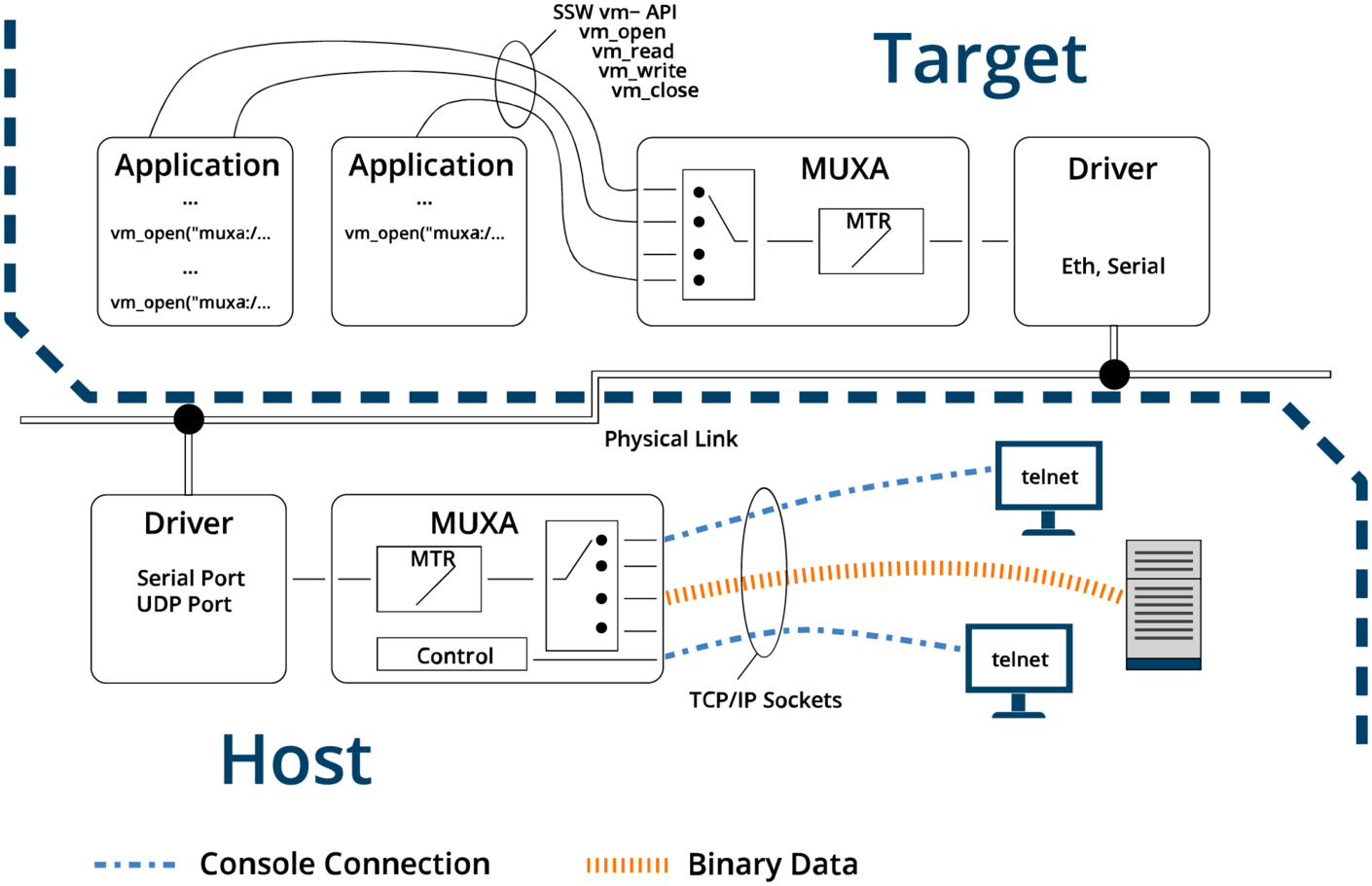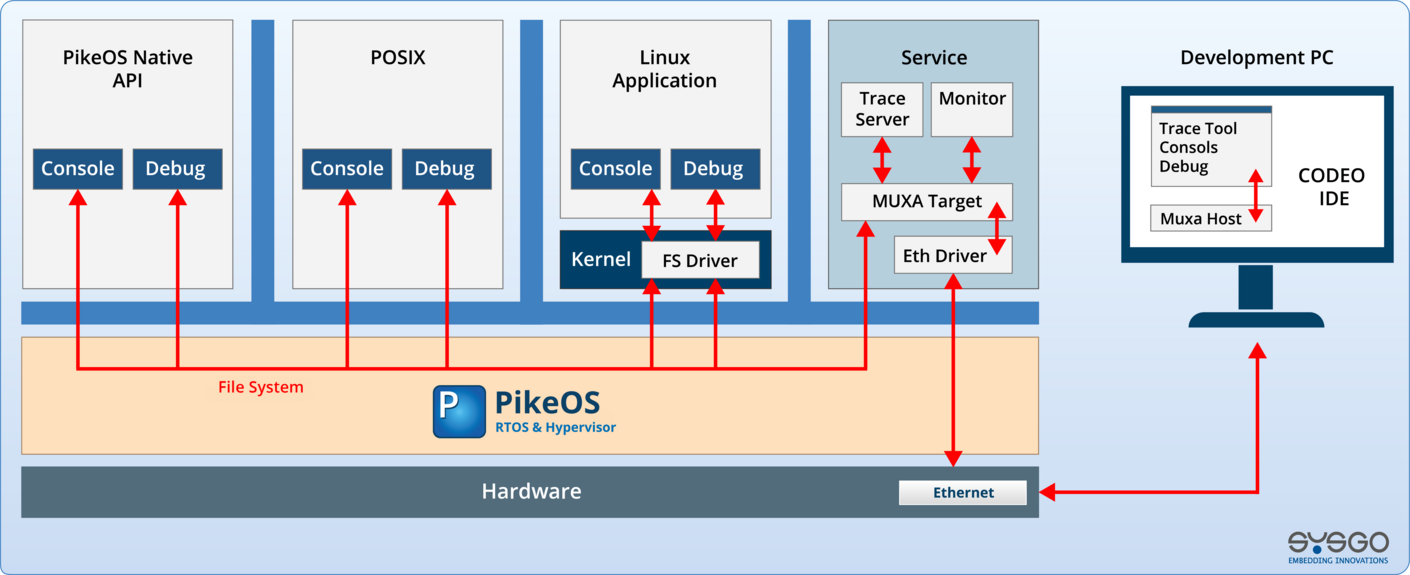Multiple Channels over one Link
Enables multiple virtual connections over a single Ethernet or serial interface—ideal for systems with limited physical I/O
Tool and Service Integration
MUXA supports concurrent use by tools such as:
- Application console I/O
- PikeOS monitor
- Debugging sessions
- System and application tracing
Lightweight and Partition-aware
Runs within a service partition, keeping it isolated and modular. Applications interact with it like any other PikeOS file-based resource



